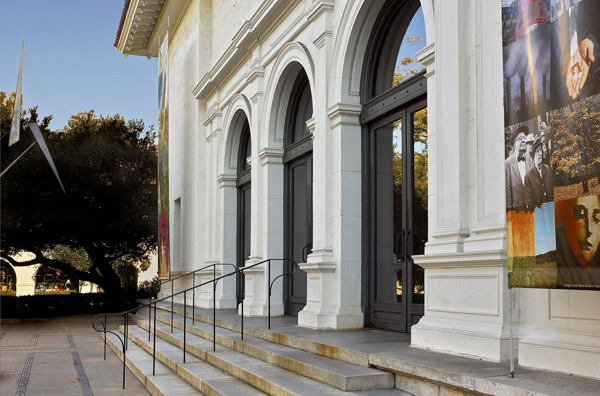La Plaza de Toros: Sunday Morning in Monterey
La Plaza de Toros: Sunday Morning in Monterey
- California
- animal
- horse
- men
- women
- 19th century American
Alive to the fact that old ways of life were fast disappearing, Charles Christian Nahl made several monumental paintings that romanticized California’s Hispanic origins. The dynamic composition centers on two horsemen, one cloaked with the red cape of a bullfighter, attempting to steady their overexcited steeds. Though he never traveled to Mexico himself, Nahl specialized in the representation of ethnic types associated with regions like Monterrey, famed for its legendary bull ring. In this scene, the spectators comprise the full panoply of different levels of society, commingling as they await entrance to the arena.
It has been speculated that the vaquero on the white horse may be identified as the legendary Joaquin Murrieta, the so-called “Mexican Robin Hood,” whose daring exploits were popularized through a novel published by John Rollin Ridge in 1854, the first novel to be published by a Native American (Ridge published the book using his Cherokee name, Yellow Bird) and the first American novel to feature a Mexican protagonist. Nahl did paint an often reproduced portrait of Murrieta, but there is no reason to presume that the centralized horseman facing us is supposed to be Murrieta. Rather, Nahl often repeated this figural type, lending his Mexican vaqueros the same swarthy features, riot of black locks, and intensity of expression that he used in his portrait of Murrieta. In fact, all of the figures crowding this scene are somewhat clichéd character types by this point, associated with a Romanticized nostalgia for the quickly vanishing Western frontier and its purported freedoms. Nahl includes vignettes within the composition, which really has no overarching narrative goal, other than to index the social strata in attendance at such a spectacle: there is the somewhat embarrassed Franciscan friar, receiving coins from a more prosperous Mexican woman vendor, assisted by an enslaved woman, whose darker skin indicates her African ancestry. Nahl adds piquancy to the scene by repeating the fairer, doe-eyed young women exchanging flirtations with their male admirers. In fact, critics admired Nahl’s relative accuracy in including such a wide variety of ethnicities, known to make-up prosperous cities such as Monterrey. The dark-skinned musician he includes near the ticket entrance is likely modeled after the paintings he would have studied of similar East African musicians by Jean-Léon Gérôme and his many followers.
But of course, the fundamentally racist underpinnings of much of the history of Old California subtends the popular fascination with the notorious bandit Murrieta and Nahl’s paintings of the culture surrounding Gold Rush California are idealizations, meant to defuse such tensions through dramatic license. In fact, Ridge’s book is the product of an ambivalence in the author’s own racist view of the superiority of the Cherokee tribe over all others. In something of the same way, Nahl’s sunny, outsized genre scenes of relatively innocuous social interaction between the various castas of Mexican society offer a sanitized version of harmonious race relations, which in fact suffered from a deep-seated anxiety over miscegenation.














